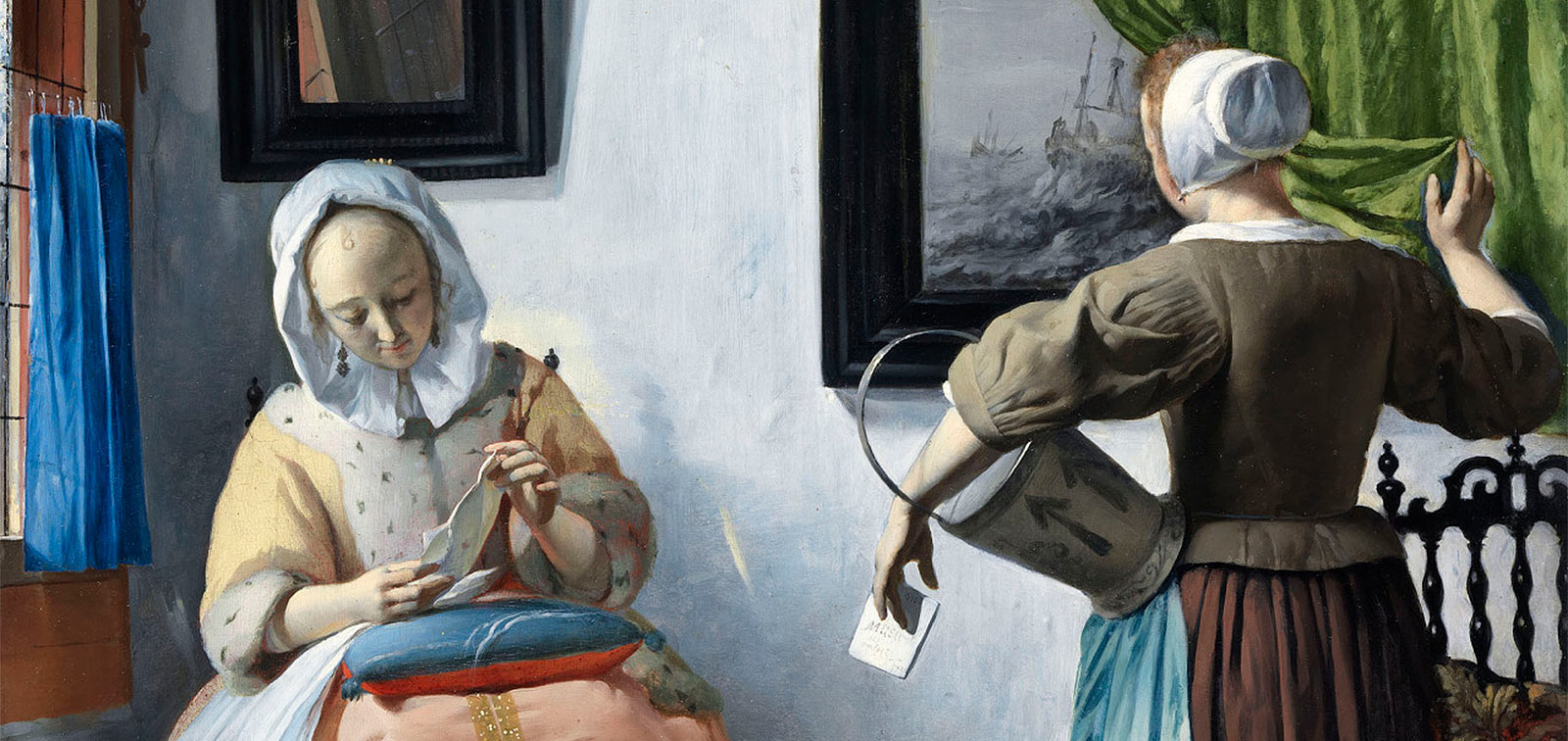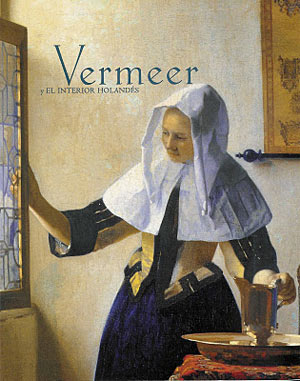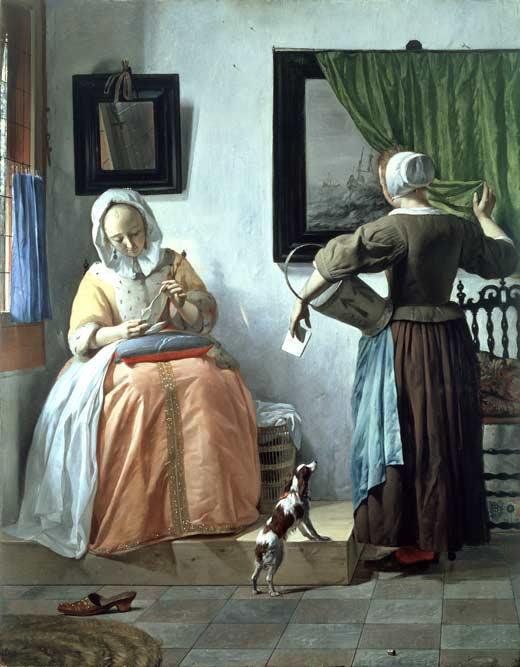Vermeer and the Dutch Interior
Madrid 2/19/2003 - 5/18/2003
Most of the paintings by Johannes Vermeer (1632-1675) depict domestic interiors, a genre that reached its highest point in the Netherlands in the years 1650-1675. Along with Vermeer, the artists who most contributed to the development of this type of painting were Gerard ter Borch, Gerard Dou, Pieter de Hooch, Nicolaes Maes, Gabriël Metsu and Jan Steen, all of whom are represented in this exhibition.
Enlarge These painters lived in a small country which made for an easy interchange of artistic ideas and they produced paintings with many common characteristics: they are generally small works of vertical format which include few figures. This formula allowed artists to focus on the representation interior spaces, the geometry of the composition and the depiction of light and of the textures of the different materials.
Even though these images are realistic in appearance, they are actually composed with great artifice and care.
Enlarge Their content is frequently symbolic in nature, and deals with issues that reflect the ideals and aspirations of the artists and of the society that created them.Paintings of domestic interiors most often deal with the virtues of domestic life, seduction and love. The protagonists of most of these works are women, who are given a prominence that hitherto they had only received as religious or mythological figures, or as personifications of allegorical concepts.
Enlarge Even though paintings of domestic interiors share many characteristics, they also vary according to the personalities of the artists, from the playful humour of Jan Steen to the painstaking attention to detail of Gerard Dou, from the fascination with spatial depth of De Hooch to the transformation of pictorial space into a space of harmony and intimacy which we find in the work of Vermeer.
EnlargeThe manner in which painters treat similar themes and formal problems also bear witness to the relationships that existed between them. In the case of Vermeer, the paintings included in this exhibition demonstrate that his art would not have existed as we know it without the example of his contemporaries. And yet Vermeer is a painter of exceptional virtuosity and pictorial intelligence.
The calm introspection which his works exude, their paradoxical combination of compositional clarity and enigmatic content, and their capacity to transcend the everyday, are some of the unique characteristics of this remarkable painter.
- Curator:
- Alejandro Vergara Sharp






